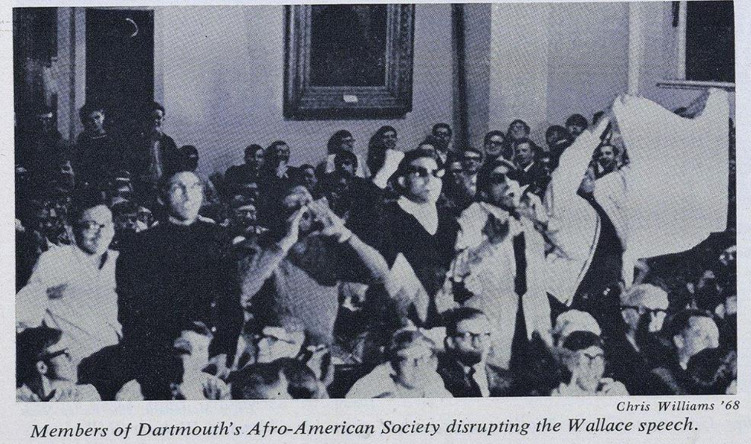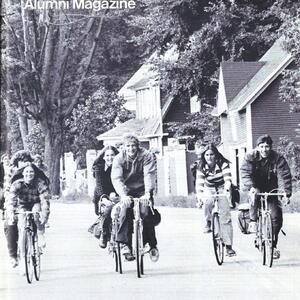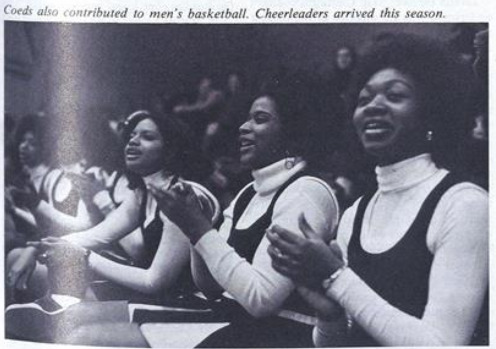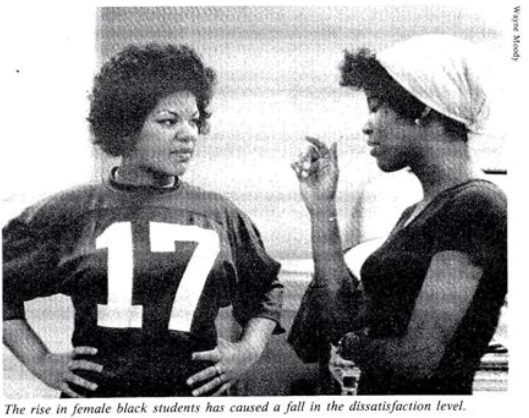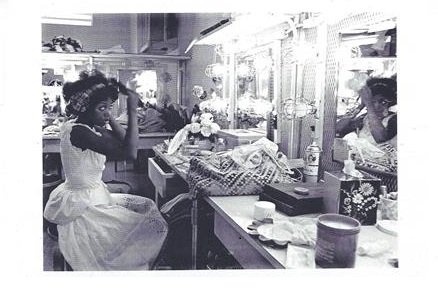Dartmouth in the Early 1970s
A very special time in terms of what white colleges were trying to do around diversity. . . And gender equality.
Vicki Marks
By the early 1970s, the increasing affordability of college and Dartmouth’s recruiting efforts were creating a marked shift in the type of Black student on campus. Not only were there more Blacks students, but there was more socioeconomic and geographic diversity among them. However, there was still not a significant population of Black people in the Upper Valley, something that Vicky would have found familiar having started her studies at Smith in Northampton, MA. With no Black women in the area, it was even more important for Black students to travel to colleges like Smith for female company.
Marks arrived at the tail-end of a period of racial reckoning, as the mid to late 1960s saw great changes in the political organisation of Black Dartmouth men. While the activism on campus was not as dramatic as peer institutions like Cornell, historian Stephan Bradley notes that Dartmouth students had managed to secure for themselves “a Black Studies program, a Black culture centre and residence hall, an admissions strategy to recruit and matriculate a higher number of Black students, and seasonal and year-round programs that assisted urban Black youth who hoped to attend college.”
Most of the time, especially in Econ, I was the only woman, and I was the only Black person.
Vicki Marks
While Black students pushed to see more faces like theirs on campus, others at Dartmouth were advocating for the admission of women. In the end, it came down to the Board of Trustees, and the vote on coeducation passed by a ‘substantial majority.’ Only a year later, a consensus had formed that “the College [had] enrolled women without upheaval, without earthquakes…” Others saw such statements as an erasure of obvious tensions in a bid to “[bring] in the girls but not the feminism.” Certainly, not everyone was on board with the arrival of the women. One article describes misogynistic responses from male students during a campus debate on coeducation, with one student threatening violence against women and others making lewd comments. There was an incident where a male student barged into a female’s room and tore a piece of paper from an assignment she was working on.
Conversations that appeared in The Dartmouth and the Dartmouth Alumni Magazine made much of the female students, and the high level of scrutiny probably pervaded the thoughts and actions of the first few classes of women. In an article for the Magazine, Mary Ross wonders how women will impact course offerings, distribution of majors, faculty appointments; and even if gendered language like freshman will change.
Women at Dartmouth in the early 1970s sometimes complained in The Dartmouth that they did not have as much success dating as one would expect because the male students were more interested in visiting or hosting students from women’s colleges. Coeducation also brought about physical changes to campus accommodations. It seems however, based on the article by Ross, that the college wanted to make it seem like these changes were minimal, perhaps concerned that alumni would respond negatively to the appearance of radical changes, or that women would be offended by the implication that they required special treatment. The changes included full length mirrors, bathroom shelving, more private shower facilities, improved lighting in remote areas and “slightly more attention to the condition of window shades."
Two issues of the Dartmouth Alumni Magazine in 1972 feature a front cover that explores coeducation. The image of the women walking on the Green and the photo of Mary Allen '73 also seem to visualise a radically changed campus. Missing from these images, particularly the magazine covers, is a consideration of diversity of female students. In fact, women accepted to the freshman Class of 1976 (who arrived in Fall 1972, Vicki's senior year) were statistically similar to the men. Ross observed, “More than a quarter are Dartmouth daughters. They share roughly the same geographical, ethnic, and socio-economic distribution and the same 70-30 ratio of public and private school background."
In contrast, these photographs from Dartmouth Alumni Magazine articles in the mid and late 1970s spotlight the presence of Black women on campus.

